Utah County Birders Newsletter
|
 |
Contents
December Meeting
Upcoming Field Trips
Captain's Log
Bird of the Month
Field Trip Report
Thursday, December 14th, 2017: Bean Museum, 7:00PM
Christmas Bird Count Coordination and Bird ID
Quiz.
We will coordinate the Provo CBC and have a bird quiz challenge to sharpen
our skills for the counts.
Address for the Monte L. Bean Museum is 645 East 1430 North, Provo, UT http://mlbean.byu.edu/
FIELD TRIPS:
Saturday, Dec. 16th, 2017: Provo Christmas Bird Count
Time for the best holiday tradition there is - the Christmas Bird Count!
This year is the 117th count and we have over 40 years of data for Provo. As
usual, our meeting this month will include a bird count quiz and then we will go
over the assignments and groups. We always need more participants and all birder
experience levels are welcome. Please let Bryan know if you can't be at the
meeting and want to participate in the bird count. Plan on attending the result
compiling and pot luck dinner too after the bird count!
For more info about the bird count contact Bryan Shirley:
bt_shirley@hotmail.com, 801-722-9346
For more information on Christmas Bird Counts around our state go to:
http://www.utahbirds.org/cbc/cbc.html
The dates for some (but not nearly all) of our local counts are:
Sat., Dec. 16 Provo CBC
Sat., Dec. 16 SLC CBC
Sat., Dec. 16 Ogden CBC
Sun., Dec. 17 Park City CBC
Sat., Dec. 30 Payson CBC
We are actively recruiting people to lead local half-day field
trips, any time, any place. If you would like to lead a field trip or if you
have any ideas for this year’s field trips, please contact Keeli at -
keeli.marvel@gmail.com
Utah County Birders
Captain’s Log: December
2017
by Keeli Marvel
Howdy folks! Can’t believe it’s the end of the year again. I’ve got some good
birding to report on this month. As some of you know, Sam and I headed down to
South Texas last month for the Rio Grande Valley Bird Festival. It was a very
successful trip for both of us as I racked up 28 lifers and Sam, who hasn’t done
much eastern birding, pulled in a whopping 61 lifers. That’s an impressive
total! It was so birdy and we visited so many different places I’ll have to
split it up into a couple of different articles just to do justice to the trip.
As far as trip plans go, if any of you are interested in attending in the future
(and I would highly recommend it), we started the trip by flying into San
Antonio and driving ~3 hours south to Harlingen. There is a small airport in
Harlingen, but it costs a bit more to fly into, and we were looking forward to
seeing some birds on the way down. Right out of the gate we picked up Harris’
Hawks (which I kept missing, but saw plenty of later in the trip), and lifer
Crested Caracaras for Sam. I don’t recall if we saw any Scissor-tailed
Flycatchers on the way down, but it seems like we went through a stretch where
there was one on every powerline and a Harris’ Hawk on every pole on the drive
back to San Antonio.
Our first trip we’d booked through the festival was a big day, and it was,
indeed, a very big day, for us. Our van won the challenge against the other vans
by seeing an unbelievable 154 species between 6am and 4pm that day. We started
the morning off by spending a few hours at Estero Llano Grande State Park. This
place is a gem full of different habitats with miles of trails, boardwalks, and
bird feeding stations. We got our first bird of the day perched right outside
our van in the parking lot, a Buff-bellied Hummingbird. Other species that were
new for me there were: Mottled Duck, Plain Chachalaca, Least Grebe, Eastern
Screech-Owl, a very well camouflaged Common Pauraque roosting on the ground
(Common Pauraque are in the Poorwill/Nighthawk family), Green Kingfisher,
Northern Beardless-Tyrannulet (the tiniest of all our flycatchers), Great
Kiskadee, Green Jay, and Clay-colored Thrush. We finished the visit to Estero-llano
with just over 100 species! It’s definitely a place to not miss if you’re going
to bird the area.
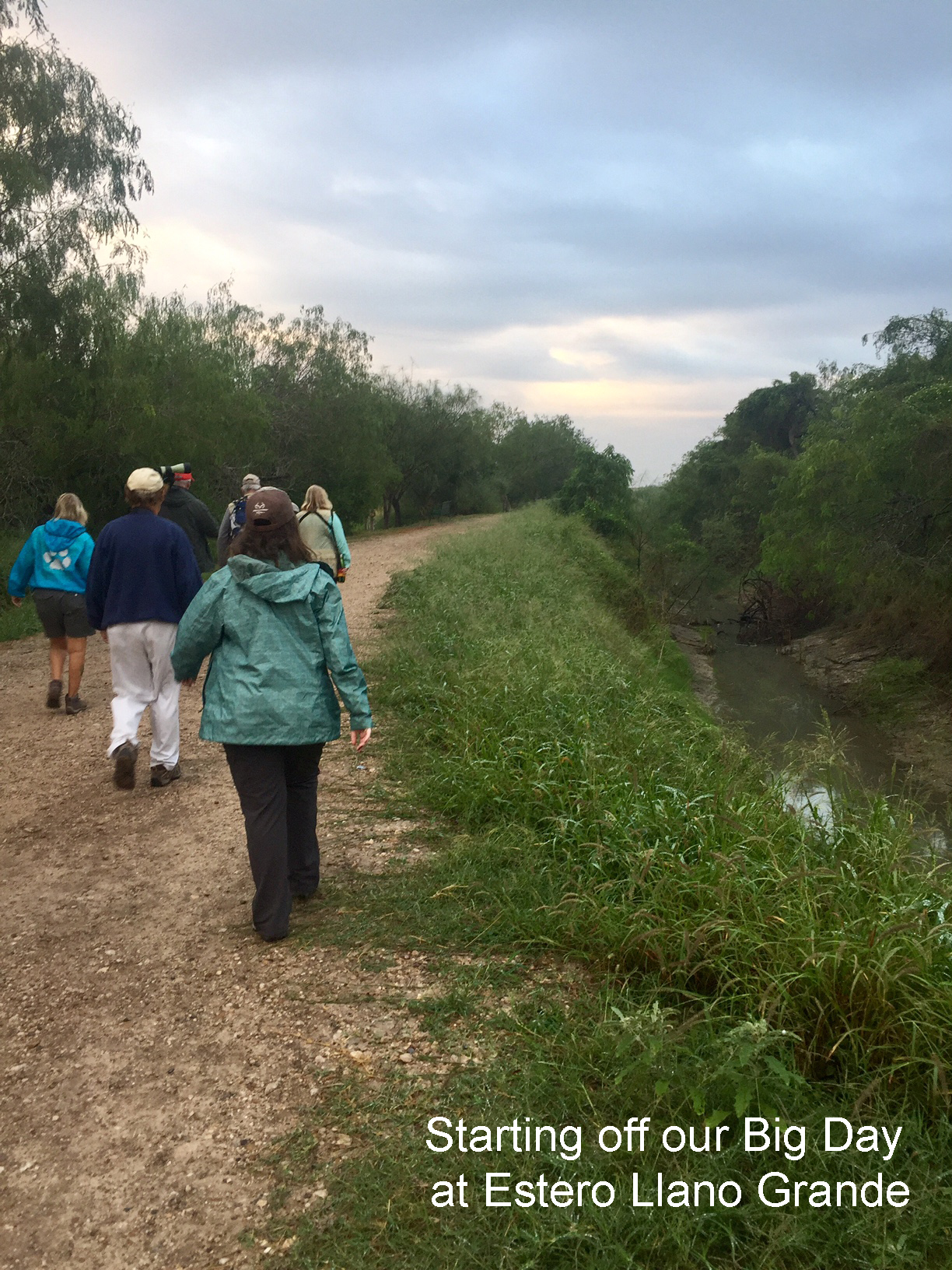
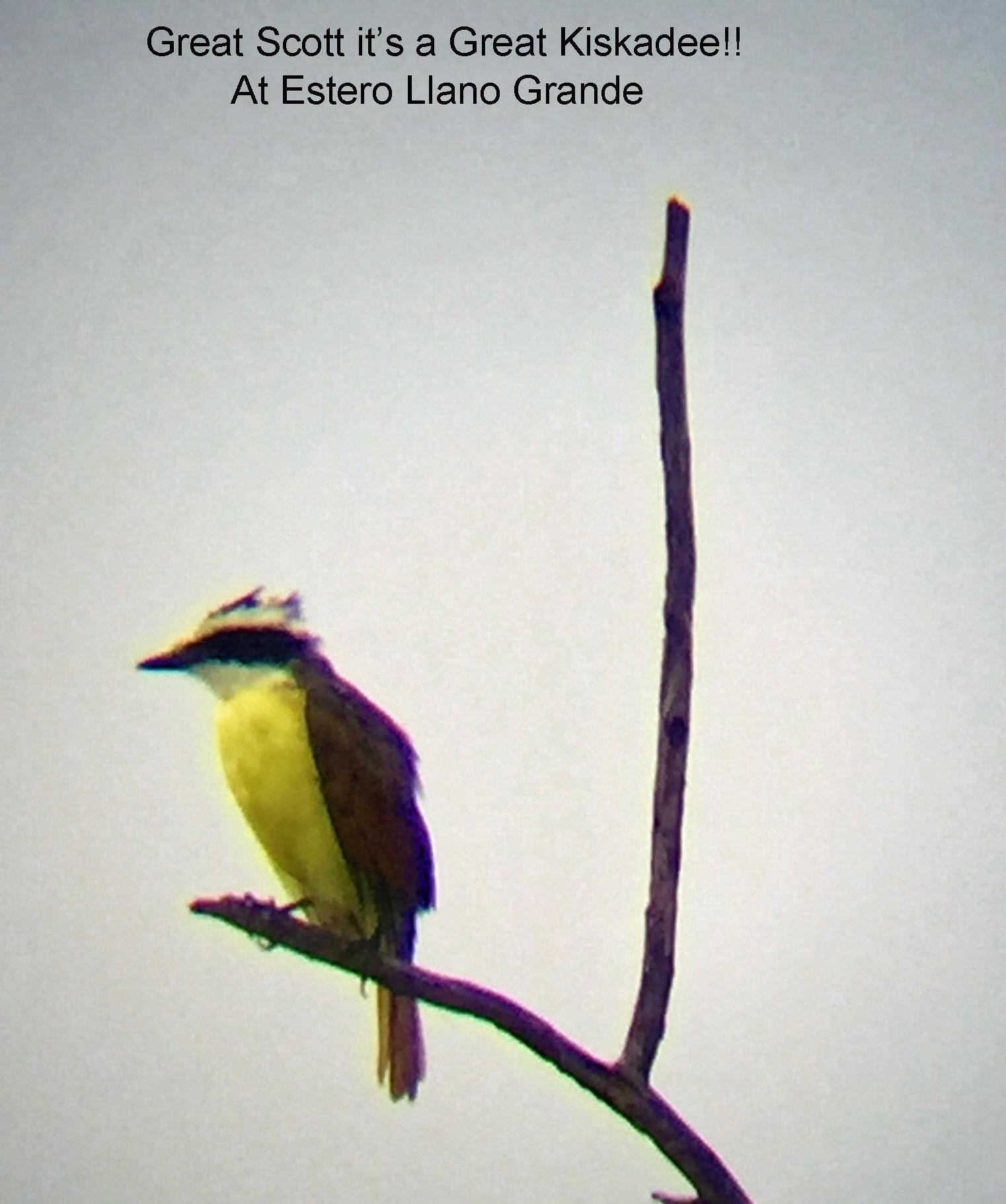
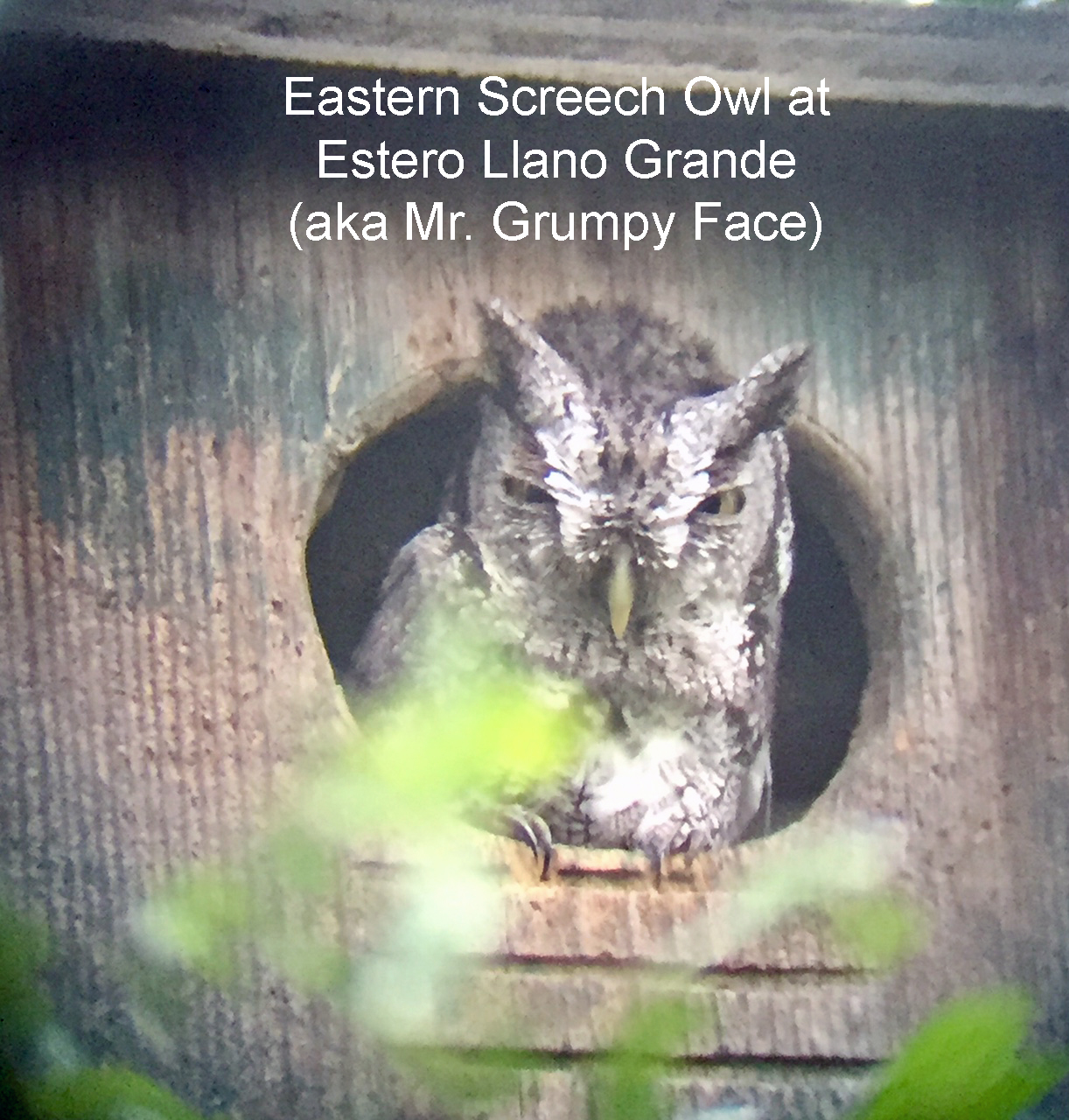
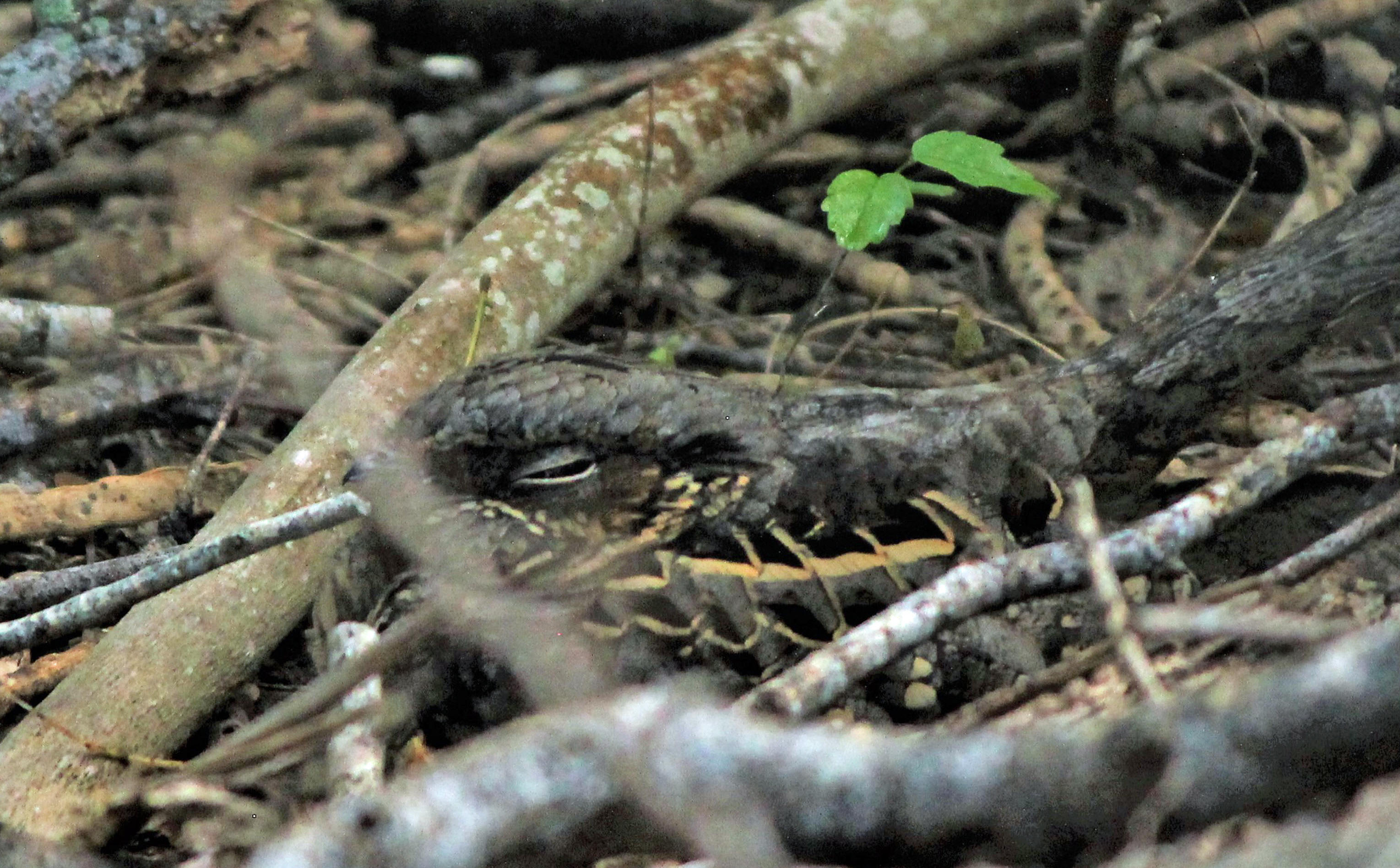
Common Pauraque (photo by Sam Phillips)
From there we picked up a few species working our way through the rural areas
east and south of Harlingen on our way out to South Padre Is. We added Bronzed
Cowbirds, White-tailed Hawk, Broad-winged Hawk, and a pair of Aplomado Falcons.
The Aplomado Falcons can often be spotted along the state road 100 on your way
to South Padre Island. There are a few gated access points for Laguna Atascosa
Wildlife Refuge, and at one of them a little parking area provides a view of a
nesting platform to the south of the road where the Aplomado Falcons often
perch. On our second visit a few days later we spotted one way out to the north
perched on a guy wire for one of the huge wind turbines, and another buzzing a
White-tailed Hawk perched on a power pole. This is also a good place to see (and
hear) Eastern Meadowlarks.
Out on South Padre Island we pulled onto a beach access point just north of the
Convention Center – a hard-to-miss building with huge sea life murals painted on
the side. On the mudflats we picked up a very diverse handful of wading birds
including Short-billed Dowitchers and Piping Plover--which were new for me.
Piping Plover are possibly the cutest of all currently listed Endangered
Species. We also had other interested species such as Ruddy Turnstone, Royal and
Sandwich Terns, Black Skimmer, and Dunlin.
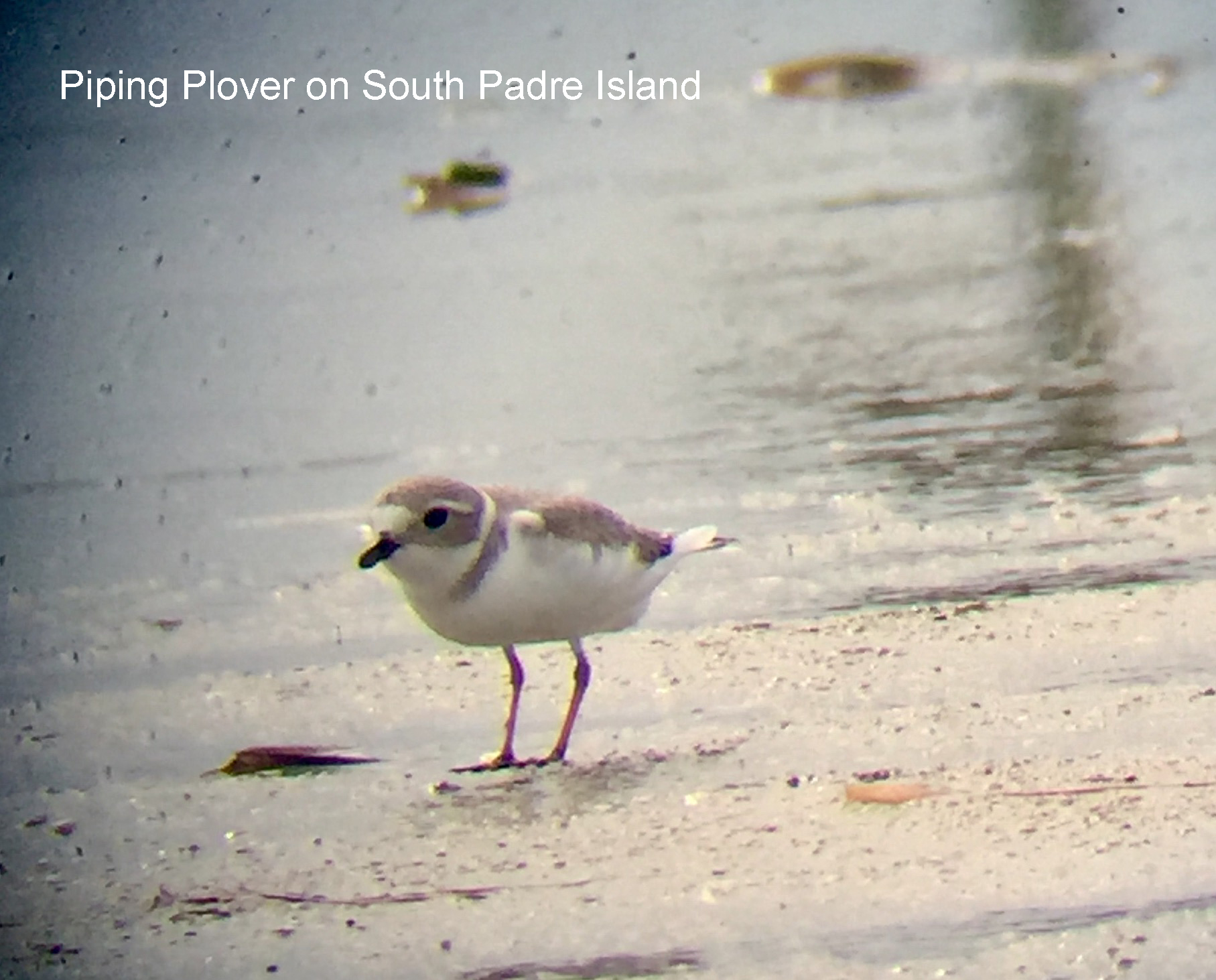
The South Padre Convention Center itself is a big time birding hotspot with a
water feature, boardwalks, and a marsh where you can sometimes hear Clapper
Rails clapping. We were not so lucky to catch the Rails, but we picked up other
species including Tennessee and Pine Warblers, a female Rose-breasted Grosbeak,
and Indigo Buntings. On our return visit a couple of days later Sam and I found
several other warbler species including Magnolia and Nashville Warblers, a
flashy male American Redstart, and a Dickcissel.
Following our visit to the Convention Center, we pulled off in a steady drizzle
to scope out an American Oystercatcher and a Herring Gull in the Shrimp Basin,
and headed south and inland towards Brownsville. Birding sometimes takes you to
some less-than-savory places, and our next stop was the Brownsville dump. The
dump allows birder access so we drove right in and picked up a Chihuahuan Raven,
a Tamaulipus Crow, Black Vultures, and Crested Caracara. The crows have not been
spotted in the area for several years and were causing quite a stir as they
showed up just in time to be a mega highlight of the festival. I wonder if they
were aware of the celebrity effect they were causing amongst the birding
community as they were fishing through garbage at the dump. Definitely not the
most scenic (or best smelling) place to photograph mega rarities, FOR SURE. We
finished off the trip and our Van One (Van Won!) winning list in the Brownsville
suburbs by picking up a flock of very whistly Black-bellied Whistling Ducks (a
species which lives up to its name), and a Green heron.
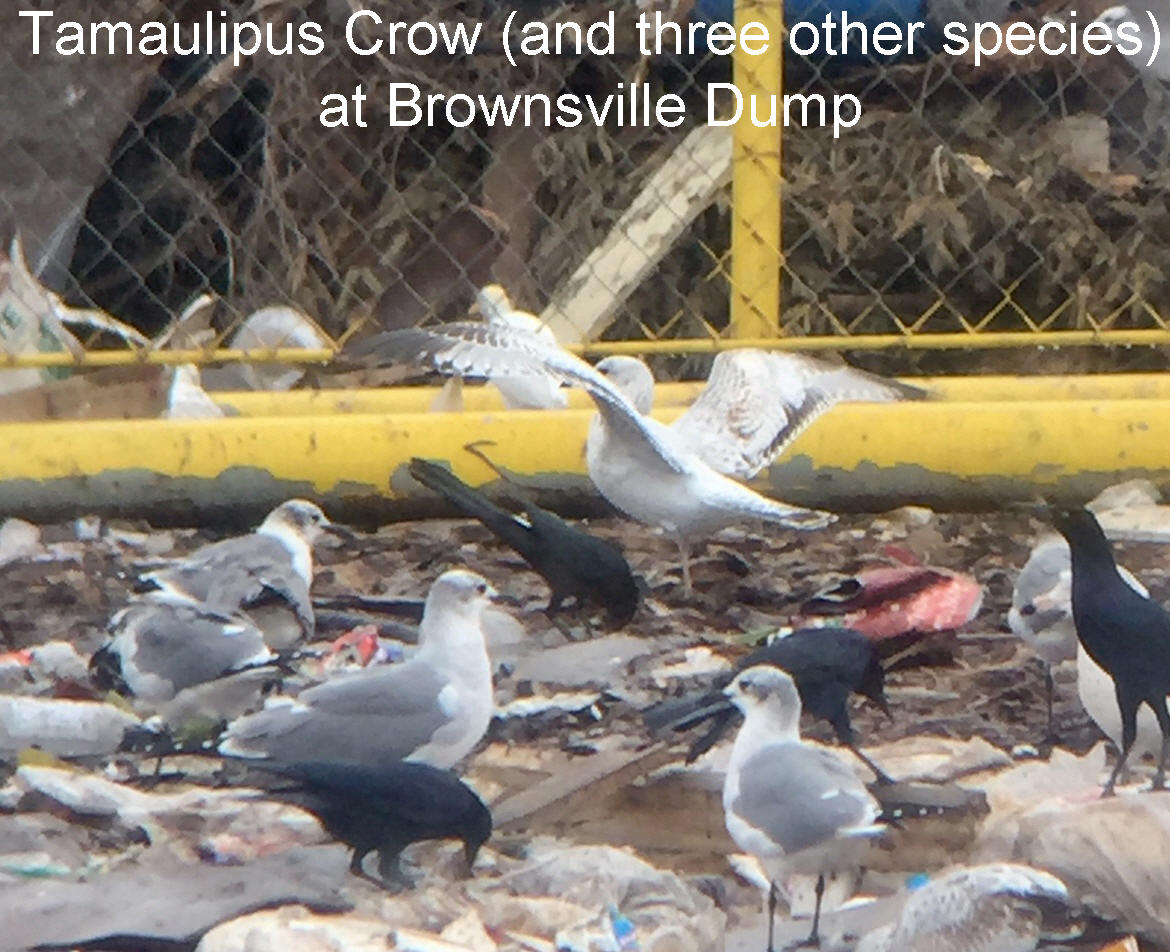
If you’ve stuck with me this far, I applaud you, and if you’d like to read more,
you’ll have to tune in next month as I tell tales of foggy birding along the
mighty Rio Grande and near misses with Border Patrol.
Till next time – I hope you all have a very Merry Christmas, a happy and warm
holiday season, and I hope to see you out at one of our Christmas Bird Counts!
Happy Birding!
Holidays
by Keeli Marvel (Reprinted from December 2010)
This month I’m going to diverge from the normal bird life history narrative
a little bit and start with a story.
I credit my college ornithology teacher with getting me wholly and irrevocably
hooked on birds and birding. He had an unorthodox teaching method that was
totally unpredictable, yet his classes were the highlight of my week. One class
period he brought a bucket of fried chicken to class to teach us a lesson about
bird bone structure. The next time we met for class he’d recite poems that
talked about birds, and the next we’d be singing songs that had birds in them. I
was thinking about this the other day while trying to decide what to spotlight
for this month’s bird of the month. I was also, as it will become apparent,
feeling the holiday spirit. I decided this month to spotlight birds in common
holiday songs, because it’s fun (for me at least) to find little bits and pieces
of the world of birds that I’ve come to love in unexpected places.
After some thought I found a few traditional holiday songs that you might have
sung many times without even thinking about the bird references hidden within
their verses:
In the carol “Sleigh Ride” the riders are “snuggled up together like two birds
of a feather would be.” Sounds pretty cozy, right? Makes me think of doves all
fluffed up and nestled together in their roosts.
In the song “Winter Wonderland” we learn that when winter wonderland weather has
arrived, the bluebird has gone away (to warmer climes, we hope) and has been
replaced by a “new bird” who, not only is here to stay, but also serenades those
walking in the winter wonderland with a love song. I think I’d like to round my
year list off with this bird, but I’ll probably have to break out the snowshoes
first.
Finally, the crowning glory of all bird references in holiday songs, and
possibly the ultimate bird-lover’s Christmas wish list: The Twelve Days of
Christmas. I did a little research (on the internet, so take it with a grain of
salt) to see if I could figure out the meaning and origins of this carol. Why
exactly is this poor girl’s true love giving her so many strange presents? When
singing this song, I have visions of a gift giving spectacular that begins with
a single partridge and ends in a spectacular broadway-esqe finish complete with
chorus lines of drummers and pipers and lord-a-leaping. It’s quite the
production, really.
What my various sources agreed upon was this: no one really knows where the song
originated. Sometime in the 1700s we find the first record of it as possibly a
recitation, or some sort of memory game, which I would ultimately lose at
because when it comes time to sing all twelve verses in the correct order, I get
lost somewhere around the eighth or ninth.
In early versions of the lyrics, five golden rings probably referred to
Ring-necked pheasants and today’s four calling birds were actually four “colly”
birds, a common name back then for blackbirds. Turns out even the pear tree at
the beginning of the song and the end of each verse might just have been a
repetition of the French word for partridge: “une perdrix” (pronounced pear-dree).
What end up with are seven days of swans, geese, pheasants, blackbirds, French
hens, turtle doves, and partridge or two to top it all off. Nice Christmas bird
count list of species, if you ask me! I’ll let you speculate on the species
identifications…
Hope you all have a great holiday season, and happy birding!
If you would like to write an article for the Bird of the Month, please contact Machelle - machelle13johnson@yahoo.com
Click here for past 'Birds of the Month'.
No report published this month. If you attend the
monthly field trips, consider sending your report!
Printable Version of this UCB Newsletter